Are you searching for birds that start with G? Well, look no further! Here is a comprehensive list of 17 birds that start with the letter G, including some basic and interesting information about each one.
Gray Catbird – Dumetella carolinensis
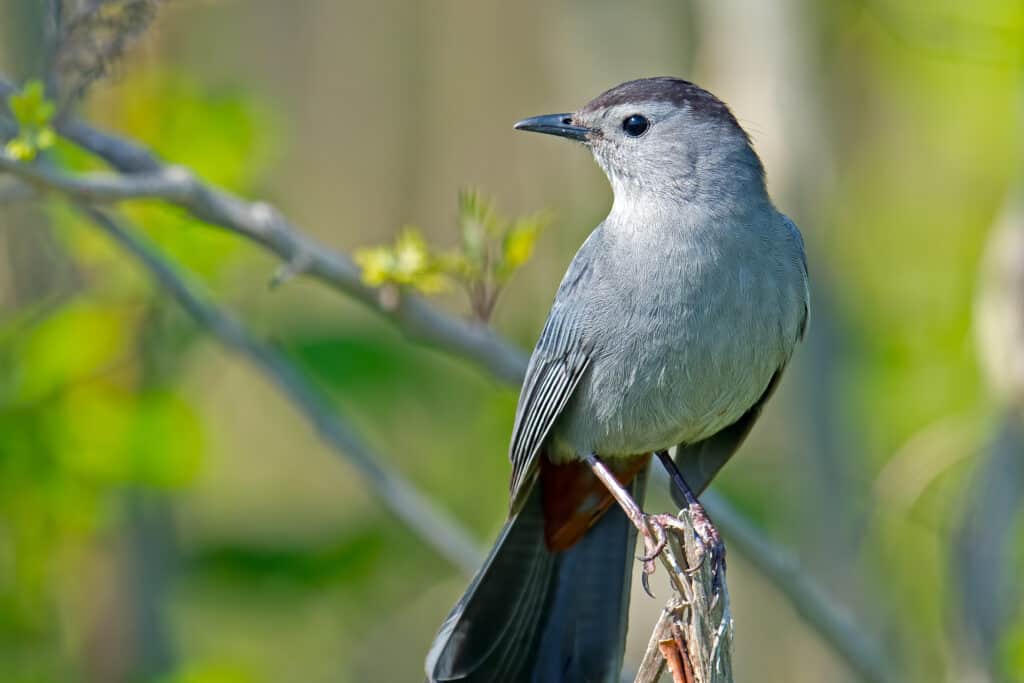
While this species doesn’t face threats, it may be susceptible to urbanization and climate change.
©Brian E. Kushner/Shutterstock.com
The gray catbird is a medium-sized perching bird related to mockingbirds and thrashers. They have unique vocal abilities and long songs. In fact, they get their name from their distinctive mewing calls that sound similar to cats. You can find these birds in North and South America, where they breed across much of the United States.
Gadwall – Mareca strepera
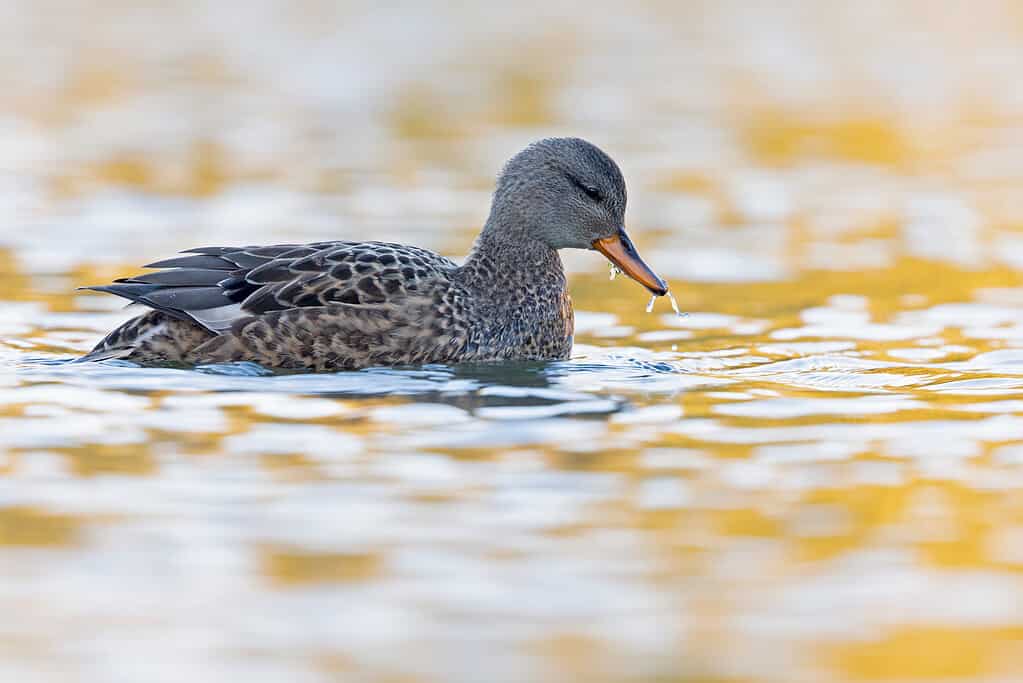
The gadwall is an elegant looking duck.
©Bouke Atema/Shutterstock.com
Gadwalls are common dabbling ducks with an elegant look. It is a widespread species thriving in North America, Europe, Africa, and Asia. They are birds of open wetlands, like wet grasslands and marshes. And they find food by diving underwater or stealing from other ducks. You can find its nest away from the water on the ground.
Golden Eagle – Aquila chrysaetos
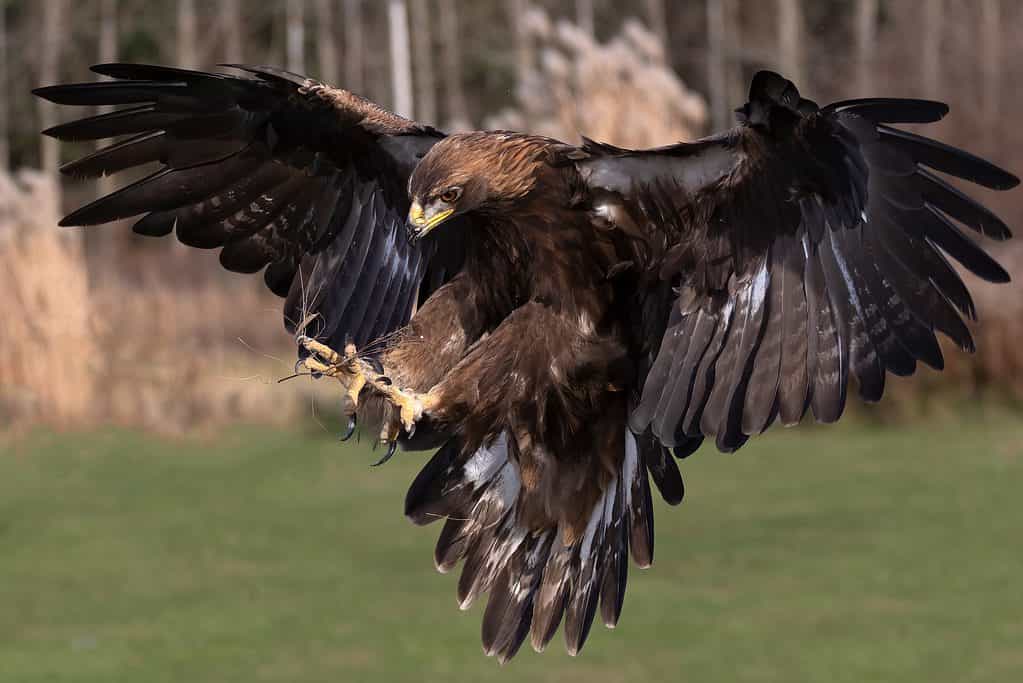
Golden eagles are the fastest birds that start with G.
©Touched by light images/Shutterstock.com
The golden eagle is a bird of prey in the northern hemisphere. This bird is one of the most widely distributed eagles in the world, inhabiting most of North America, Europe, and Asia. Golden eagles are very large raptors, measuring up to 40 inches long and featuring a nearly eight-foot wingspan. And you can find them in open or semi-open habitats, like tundra and woodlands.
Goldeneye – Bucephala ciangula and Others

Beautiful common goldeneyes swim in the water during winter.
©iStock.com/Jeff Kingma
Goldeneyes are actually a genus of diving ducks from the northern hemisphere, primarily in North America, Europe, and Asia. They are medium sea ducks with bulbous-shaped heads and golden-yellow eyes. And you can find them near coastal waters or inland lakes and rivers near wooded or forested areas.
Great Blue Heron – Ardea herodias
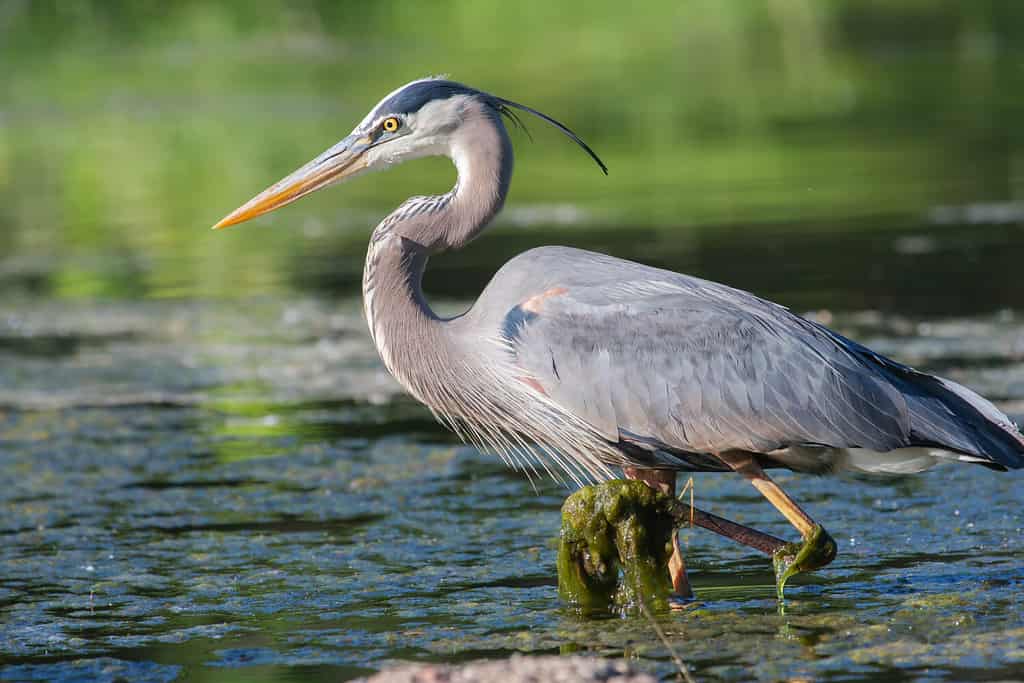
Great blue herons inhabit open water and wetlands.
©Joseph Scott Photography/Shutterstock.com
This large wading bird is native to North America and some northern parts of South America. It is the largest heron in North America, measuring up to 54 inches tall with a 6-foot wingspan. As its name suggests, the great blue heron is a slaty gray color with long legs and a long neck. They inhabit the shores of open water and wetlands, where they feed on fish and other aquatic creatures.
Garganey – Spatula querquedula

Garganeys are small dabbling ducks.
©WildlifeWorld/Shutterstock.com
The garganey is a small dabbling duck of Europe and the Palearctic. Adult males are very distinctive, featuring brown heads and broad white stripes over their eyes. But females are more difficult to distinguish. These water birds breed in grasslands near lakes and shallow marshes, where you will find them skimming the water’s surface for food.
Gyrfalcon – Falco rusticolus
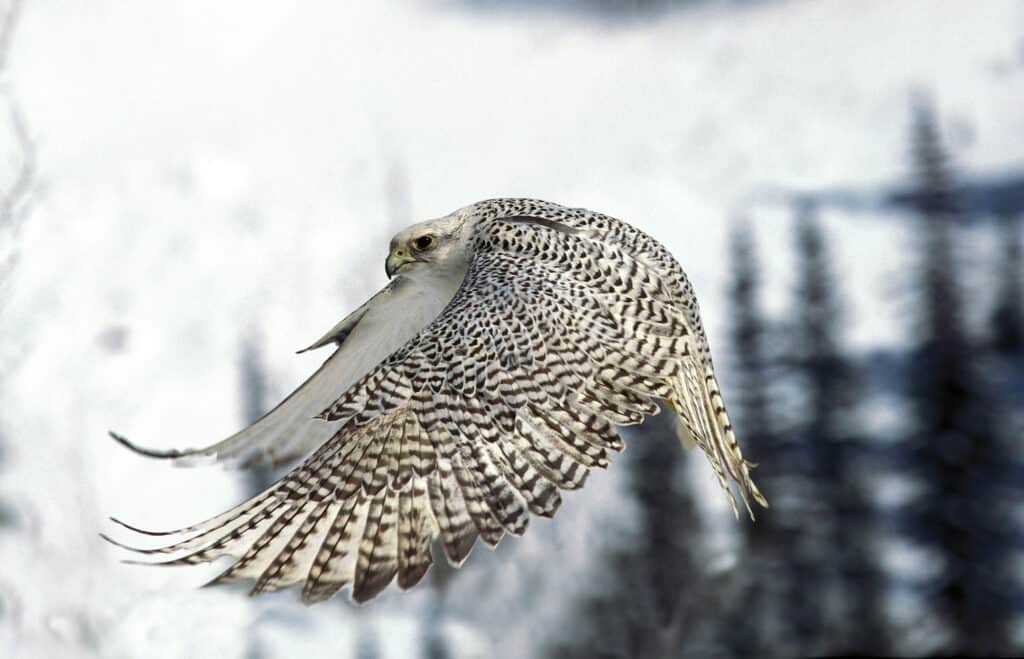
The gyrfalcon is the largest falcon in the world!
©iStock.com/slowmotiongli
Gyrfalcons are birds of prey and the largest of the falcons. They live in the Eurosiberian region and northern North America along the coasts and tundra of the Arctic. As the largest falcon on earth, the gyrfalcon is around 25 inches long and features a wingspan of up to 51 inches. During the breeding season, you can find them on cliff faces.
Great-Tailed Grackle – Quiscalus mexicanus

Grackles look similar to crows or ravens.
©Melinda Fawver/Shutterstock.com
The great-tailed grackle is a medium-sized passerine native to North America and the northern tip of South America. These birds feature glossy black plumage and long tails, and they resemble crows and ravens, despite not being related. You can find them foraging on the ground in pastures, mangroves, and wetlands.
Giant Ibis – Thaumatibis gigantea
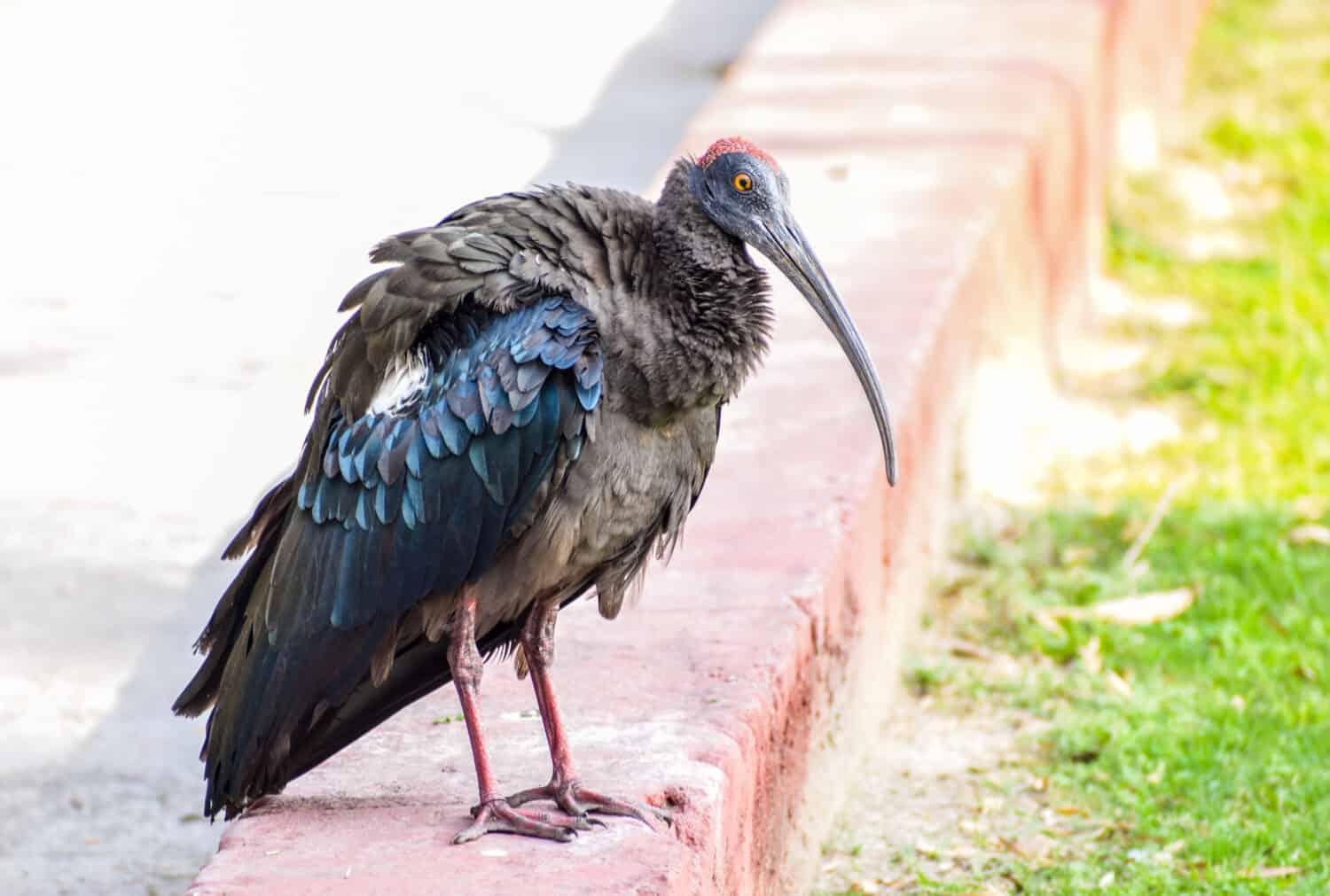
Giant ibises reside in Northern Cambodia.
©Azhar_khan/Shutterstock.com
The giant ibis is a long-legged wading bird that lives primarily in Northern Cambodia. They have dark gray bodies and light gray heads with long necks and long beaks. Adults measure up to 41 inches long and weigh over nine pounds. These birds are lowland creatures, preferring to live in swamps, marshes, lakes, and flood plains.
Great Grey Owl – Strix nebulosa
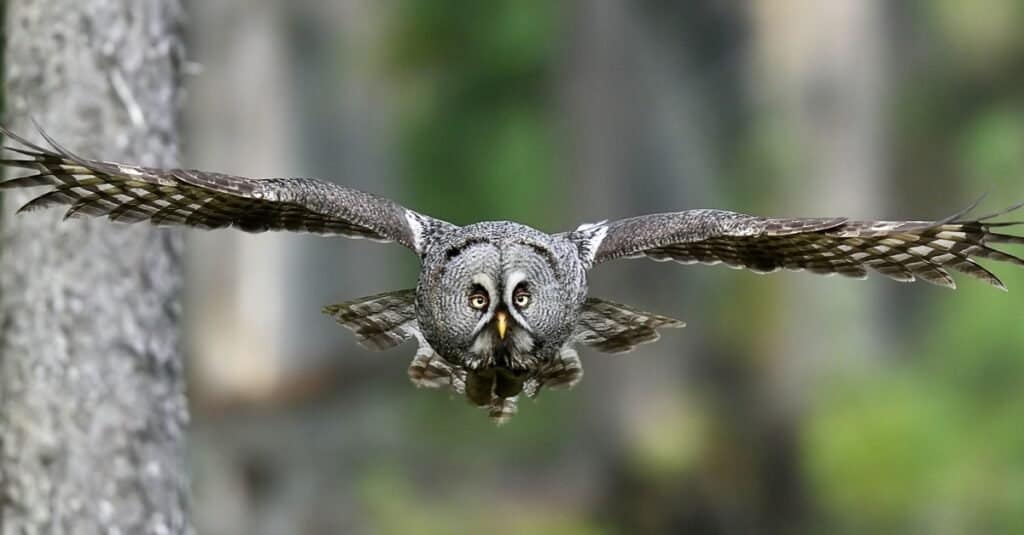
These silver animals are endangered in California due to habitat loss.
©Erik Mandre/Shutterstock.com
Located in the northern hemisphere, great grey owls are the largest owls in the world. Adult females are larger and measure up to 33 inches long, featuring a wingspan of 5 feet. These owls live in northern regions of North America, Europe, and Asia. And they inhabit dense coniferous forests near meadows and bogs.
Great Egret – Ardea alba
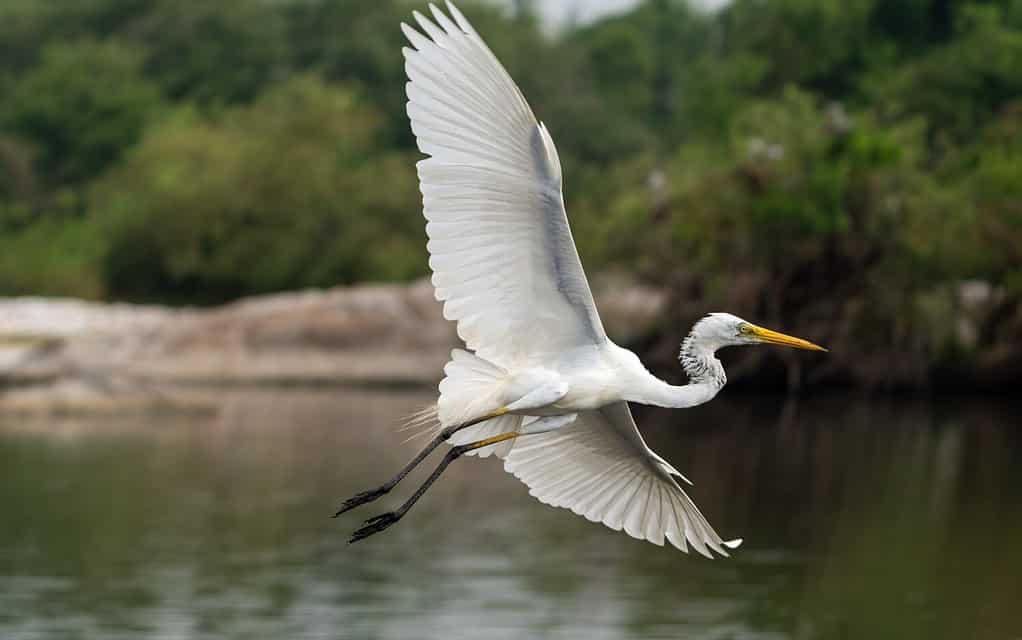
The great egret is a large bird of tropical waters.
©Banu R/Shutterstock.com
The great egret is a member of the heron family. They are large birds with four subspecies across the Americas, Europe, Africa, and Asia. Specifically, they live in tropical and other warm regions of the world. They have all-white plumage and long yellow bills. You can find them in marshes, ponds, mudflats, and shores.
Great Horned Owl – Bubo virginianus
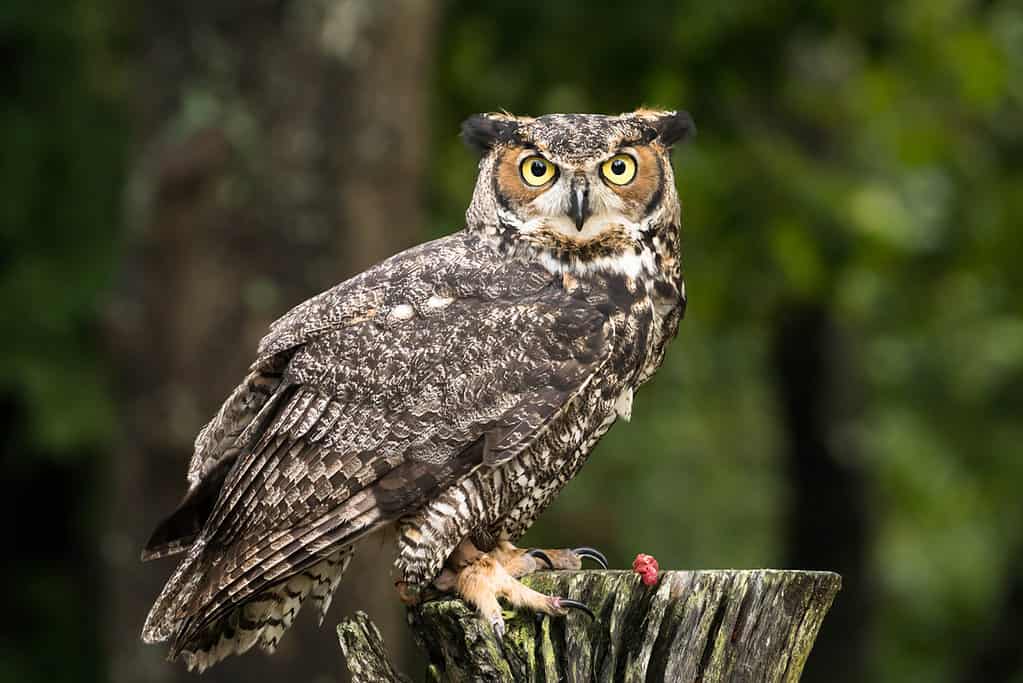
Great horned owls live in most habitats in North America.
©iStock.com/makasana
Also known as the tiger owl, the great horned owl is a large species from the Americas with barred and mottled plumage. They look like the quintessential owl you expect to see in movies and read in stories, with their wise stare and long ear tufts. They live in most habitats in North America, including forests, woodlands, and open country.
Goliath Heron – Ardea goliath

The goliath heron is the largest bird that starts with G.
©iStock.com/slowmotiongli
The goliath heron, or giant heron, is a towering wading bird and the world’s largest heron. They can reach five feet tall and feature wingspans over 7 feet. These herons inhabit aquatic habitats of sub-Saharan Africa and a small population in South Asia. They are prolific water birds, rarely venturing far from a water source, such as lakes, mangroves, and swamps. And they typically wade through shallow water.
Green Jay – Cyanocorax luxuosus

Green jays are birds of Central America.
©iStock.com/Wildnerdpix
The green jay is a colorful bird of Central America, featuring blue and black heads, green bodies, and bluish-green tails. These birds are New World jays, and they are common within their range. Some live as far north as Texas and as far south as Honduras. And you can find them in thorny bushes and thickets during the breeding season.
Great Frigatebird – Fregata minor

Great frigatebirds have an inflatable gular sac for mating purposes.
The great frigatebird is a large seabird with black plumage and red gular sacs they can inflate during the breeding season (males only). They measure 41 inches long and have a wingspan of over 7 feet. But their long, narrow wings and forked tails make them distinctive. They live in the world’s tropical seas and breed on islands like Hawaii and the Galapagos.
Giant Kingbird – Tyrannus cubensis

The giant kingbird is endemic to Cuba.
©Elliotte Rusty Harold/Shutterstock.com
Giant kingbirds belong to the tyrant flycatcher family and are one of the largest of the flycatchers. This species is endemic to Cuba, with some vagrants spotted in Mexico and Haiti. They live in lowland forests with tall trees, such as pine forests, cloud forests, swamps, and savannas.
Glaucous-Winged Gull – Larus glaucescens

Glaucous gulls spend most of their time around oceans.
©xpixel/Shutterstock.com
The glaucous-winged gull is a large bird that resembles the western gull, measuring up to 27 inches long and featuring a wingspan of 59 inches. These gulls have white heads and gray wings and spend much of their time around oceans. And reside along the coasts of North America and Europe.
The Largest Bird That Starts With G
Measuring 5 feet tall and featuring a wingspan of up to nearly 8 feet, the goliath heron native to Africa is the largest bird that starts with G. The golden eagle and great blue heron come in a close second and third.
The Fastest Bird That Starts With G
The golden eagle is the fastest bird that starts with G. These eagles can clock 200 miles per hour when diving in the sky from great heights. They possess remarkable speed and maneuverability.
Birds That Start With G: A Recap
| Common Name | Scientific Name |
|---|---|
| Gray Catbird | Dumetella carolinensis |
| Gadwall | Mareca Strepera |
| Golden Eagle | Aquila chrysaetos |
| Goldeneye | Bucephala ciangula and others |
| Great Blue Heron | Ardea herodias |
| Garganey | Spatula querquedula |
| Gyrfalcon | Falco rusticolus |
| Great-tailed Grackle | Quiscalus mexicanus |
| Giant Ibis | Thaumatibis gigantea |
| Great Grey Owl | Strix nebulosa |
| Great Egret | Ardea alba |
| Great Horned Owl | Bubo virginianus |
| Goliath Heron | Ardea goliath |
| Green Jay | Cyanocorax luxuosus |
| Great Frigatebird | Fregata minor |
| Giant Kingbird | Tyrannus cubensis |
| Glaucous-winged Gull | Larus glaucescens |
The photo featured at the top of this post is © Azhar_khan/Shutterstock.com
Thank you for reading! Have some feedback for us? Contact the AZ Animals editorial team.







